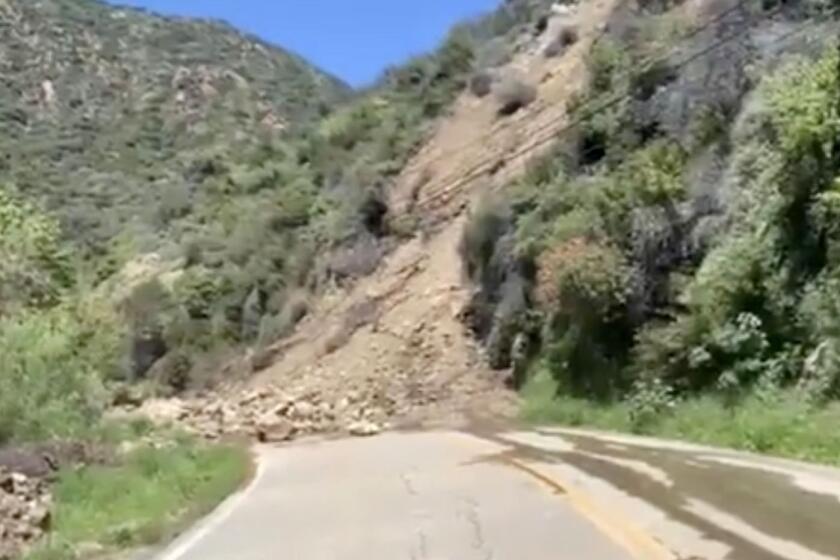Jim Newton: Orange County’s Great Park, interrupted
In Southern California, there’s nothing like a very large piece of real estate to cause discord. And the former El Toro Marine Corps Air Station is nothing if not a large piece of real estate.
Ever since the military decided to unload the base in the 1990s, Orange County residents have been bickering over what to do with the land, and the decision in 2005 to turn it into the Great Park hasn’t ended the conflict.
But first the history. Even before the military moved out, county residents divided into two bitterly opposing camps: those who supported using the site for a commercial airport and those who envisioned it as a vast and impressive park. Larry Agran, the on-again, off-again mayor of Irvine, led the park proponents, while an array of others joined to lobby for an airport. Even Los Angeles Mayor James Hahn got in on the act, lobbying federal officials to let Los Angeles take over the site and run it as an airport.
“The idea that this is going to be a ‘Great Park’ is a great hoax,” Hahn said in 2005.
The howls from Orange County were immediate. “Hands off,” replied Rep. Christopher Cox, who decried Hahn’s attempt to colonize its neighbor.
Eventually, the park advocates won out and the vast tract of land passed from the Navy to a private developer who simultaneously donated 1,347 acres to the city of Irvine. The Great Park board then commissioned designers to imagine the immense space, which they hoped would rival Balboa Park in San Diego, Griffith Park in Los Angeles and Golden Gate Park in San Francisco as jewels of the West Coast.
But no sooner had Irvine launched its transformative plan than things started to go wrong. Board members bickered over how to develop the park; one quit in frustration over what he said was wasted effort and money, particularly a $1-million public relations contract handed out without a bid. “We’ve got our priorities all mixed up,” he complained on his way out the door.
Then the housing market collapsed and, with it, the anticipated tax revenues that an adjacent development was supposed to generate and funnel to the park. And now, just as the market has begun to show some wobbly signs of recovery, Gov. Jerry Brown has taken aim at community redevelopment agencies, saying he wants the tax-increment money they collect to flow to the state instead. That could be a devastating setback for the Great Park, which has counted on redevelopment money to build the park’s many amenities.
Deadlines and expectations have come and gone. In 2005, backers of the park predicted large pieces of it would be open by 2008. In 2008, the park’s board promised that it would soon break up the El Toro runways and open a grand entrance to the area.
So what’s there today? The runways for one thing. There is certainly the start of a park. There are a few parking lots, hundreds of trees in boxes, palm trees going into the ground, a carousel plunked onto some tarmac near a big orange balloon that takes visitors aloft to look down on the property. And there’s an active community garden, tribute to Orange County’s now nearly forgotten agricultural past. Most of the improvements are clumped together in one small corner of the land.
And there is a lot that’s missing. The park plan promises more than 600 acres of wildlife corridor, but so far it hasn’t produced it. It envisions a stunning, man-made canyon to bisect it; not a shovel of dirt has yet been dug for that. Beyond the visitor area, there are hundreds of RVs parked on one of the runways. Abandoned military buildings ring the property, including barracks with broken windows and some huge structures that once housed airplanes. They’re mostly vacant.
Agran, who still sits on the Irvine council and the Great Park board, has never been one to think small — he ran for president in 1992 — and he’s not about to admit that he took on too much with this idea. “What do people expect?” he asked last week when I asked him about the pace of progress. “This was the complaint by our opponents: ‘You’re just lying. You’re never going to build a park.’ Once we defeated them, they began saying: ‘Where’s our park?’”
Agran acknowledged that the abolition of community redevelopment, should that occur, would put a crimp in the park’s development, but he insisted that the board had “a Plan B and a Plan C,” though he preferred not to disclose those publicly.
He also said one thing that might give pause to anyone thinking of enjoying the full benefits of the park anytime soon. Typically, he said, a great park takes 75 to 100 years to develop. “We’re trying to build out over the next 20 to 25 years.”
In other words, don’t plan any trips down the canyon this summer. Or next.
More to Read
Start your day right
Sign up for Essential California for news, features and recommendations from the L.A. Times and beyond in your inbox six days a week.
You may occasionally receive promotional content from the Los Angeles Times.







